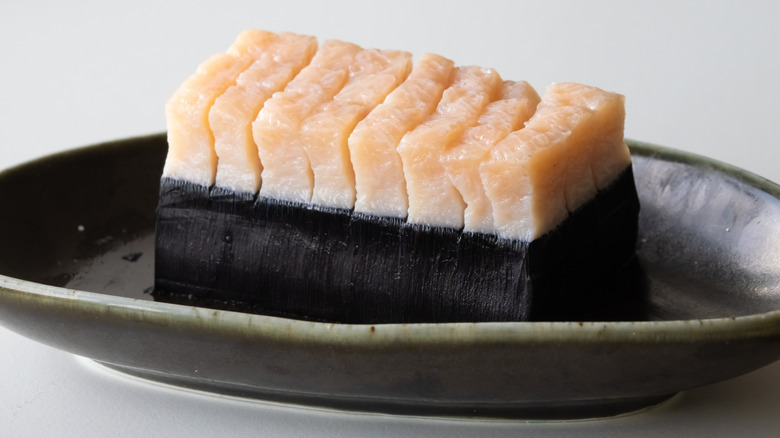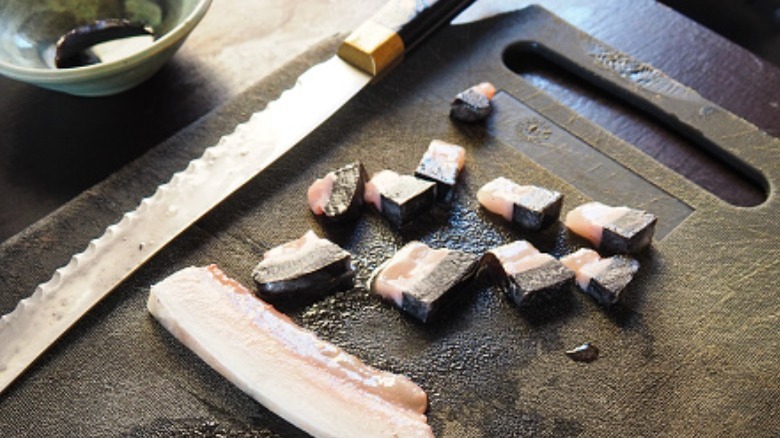Muktuk: The Inuit Dish That's Made From Whale Blubber
Whale meat is something that many of us in the U.S. may never have tried, nor are we likely to since it's against the law to sell the stuff here. Even pre-ban, though, whale meat's never been all that popular. Centuries ago it was a staple for some Native American tribes, but European settlers did not adopt it as a part of their diet. Even when whaling was big business back in the 19th century, the industry was based on harvesting the oil and the meat was often seen as a waste product. In some other parts of the world while fishing is still permitted, though, and whale meat isn't too uncommon. In Iceland, whale steaks and blubber may be considered gourmet treats, while whale meat's gotten rather trendy in Norway in recent years. In Japan, you can even buy it from a vending machine.
For the Inuit, an indigenous people whose territory includes Alaska, Canada, Siberia, and Greenland, whale meat has been on the menu for over a millennium. Not just the meat, though — they feel it's necessary to respect the whale by using up every bit from nose to tail. This means that even the skin and blubber are put to good use to make a popular snack known as muktuk. It is usually prepared by chopping the blubber and skin of a beluga, bowhead, or narwhal whale into bite-sized bits. As the skin can be somewhat tough to chew, this is often scored, as well.
Muktuk's flavor may not be for everyone, but it's certainly nutritious
Muktuk itself can be eaten raw, deep-fried, or pickled, perhaps with a side of soy sauce, while both meat and blubber can also be made into a stew. As to the taste, those who've eaten muktuk compare it to anything from fried eggs to coconut meat to beef jerky and sardines.
While not everyone cares for the flavor, Atlas Obscura absolutely raves about the gently-melting blubber "whispering of the ocean from whence it came." (One could say the same thing about canned tuna, we suppose, were one in a particularly poetic mood.) Whatever the flavor, though, there's no denying the dish is pretty nutritious. The blubber has lots of vitamin D, while the skin is high in vitamin C — this, in itself, made for a great reason to eat muktuk back in the days when the Inuit had very little access to fresh fruit in wintertime.

